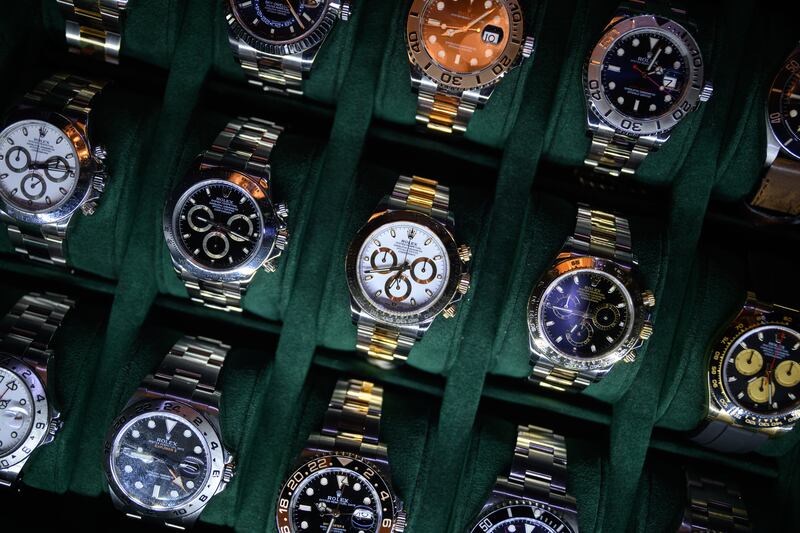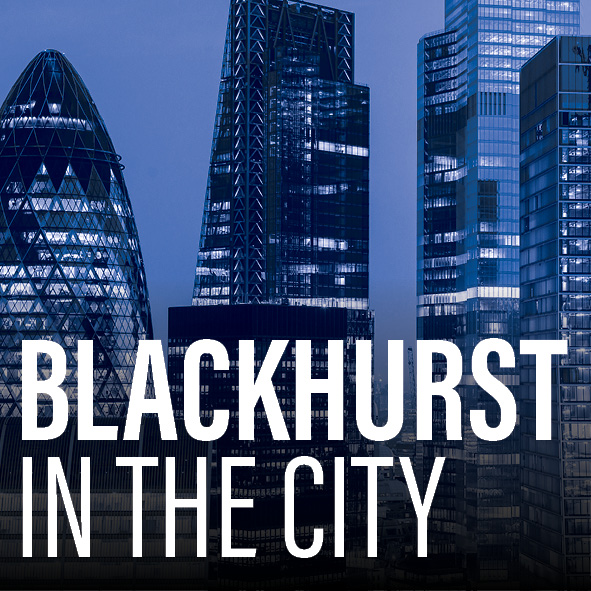
At Heathrow’s Terminal 5, with time to spare, I wander around the boutiques. In the Rolex store, there are plenty of watches on display but none of them is immediately for sale — not in the sense that I could hand over my credit card and walk away with one on my wrist there and then.
These watches on show are not the real thing. They look like Rolexes, but they’re made to cease functioning properly after a while. They’re for the customer to try on.
They’re created like this to prevent someone from insisting on purchasing a display model, so the shop still has something to exhibit.
Weirder still, is that if I did manage to acquire a Rolex, I would not wear it, not every day. I would bring it out for special occasions. Otherwise, it would remain in a safe.
Two friends in my part of London have had theirs snatched in particularly nasty, violent circumstances. I don’t want guys on mopeds following me and threatening me with machetes and hammers.
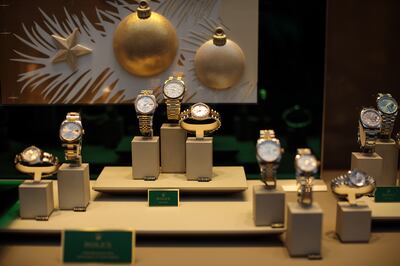
One pal, a senior partner in a law firm, fought back, with potentially disastrous consequences. Tough as he was, they still prised the Oyster Perpetual off his wrist. He was left with broken ribs, severe bruising and no treasured timepiece.
Yes, I know there is a two-to-three-year wait-list, depending on the type and specification, for a new Rolex and there is lengthy waiting, too, for models from Patek Philippe, Audemars Piquet, Omega and other top names.
They’ve been subject to delay in the past, but with the burgeoning middle classes worldwide having money to spend after storing up cash during lockdown when other sorts of expenditure were put on hold, that lag has become longer.
A 'rational indulgence'
Incredibly, anyone wanting even a Tudor, the lower-priced, sub-brand of Rolex, may also find they’ll have to wait. In that sense, high-end watches have become like the most coveted marques of car. And with that asset class, too, comes the fear of theft and the need for restricted, careful use.
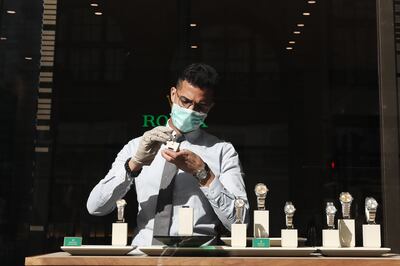
A watch, though, is not like a car. It’s a wearable, smaller and without the same number of parts, electronics, software and materials.
But a Rolex is, similarly, precisely engineered and an object of beauty and therefore of desire. And, for many people, it’s the next most expensive item they will own, after a car.
They’re prepared to wait because this isn’t frippery, a plaything. Often, they’re buying something that they know will rise in value, so it’s an investment, and they can hand it on to future generations, so it’s an heirloom. They’re happy to hang on.
Remarkably, those who change their minds after being told their Rolex has finally arrived is tiny, about 5 per cent. Roughly 95 per cent stay the course. This, too, when we’re constantly informed that people today increasingly require instant gratification. It seems they’re prepared to make an exception where a Rolex is concerned.
Purchasing a Rolex is what Brian Duffy, chief executive of Watches of Switzerland, describes as a “rational indulgence”.
Luxury v demand
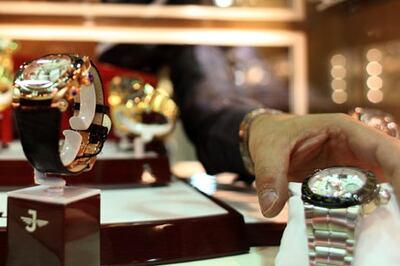
His company, which sells luxury watches and jewellery, is not in a bad place either, as “the only listed way to gain significant exposure to Rolex”, said Credit Suisse in a recent rave note. The shares were 840.50p when the Credit Suisse report was written early last month. The stock analysts set a price target of £10.75. They’re already up to 935.17.
While Credit Suisse was bullish overall, there were some bearish points, one of which was “supply constraints”. Constrained supply of certain watch brands is lower than demand, which is supportive of strong growth and margins.
“However, it remains a fine line to walk as too little supply can hold back growth as well as encourage moves to the second-hand market,” the Credit Suisse note said. “At the extreme, the push has led to a market in counterfeits, with the Swiss watch industry a top target in this regard.”
In Switzerland, there are reports that Rolex — founded in 1905, owned by the Hans Wilsdorf Foundation and headquartered in Geneva — is building a new, $1 billion factory in nearby Bule.
It will measure 100,000 square metres, the equivalent of 10 football pitches, and create 2,000 jobs when completed in 2029. Publicity-shy Rolex refuses to confirm, preferring to wait, it’s thought, until the deal is finalised.
Rolex had turnover of $7 billion in 2021 and manufactured about one million watches from facilities in Geneva (where they’re assembled and subjected to rigorous daily testing), Chene-Bourg, Plan-les-Ouates and Biel.
The feeling is that the new plant is not intended to ramp up production — certainly not to levels that would drastically bring down the wait-list.
It may reduce the delay a little, moving the company away from Credit Suisse’s “fine line” description, freeing up the ability to grow and not pushing too many would-be buyers in the direction of the second-hand market. In reality, though, it’s more about raising the famed quality still higher.
There is a reassuring aspect to Rolex. Others would be tempted to expand in all directions, rushing out cheaper models, upping production, cashing in on success — and probably eventually going bust.
Instead, Rolex plays a long game. It’s an all-too-rare example in a ferocious, crazily fast commercial world of a firm that knows how to make patience a virtue.
